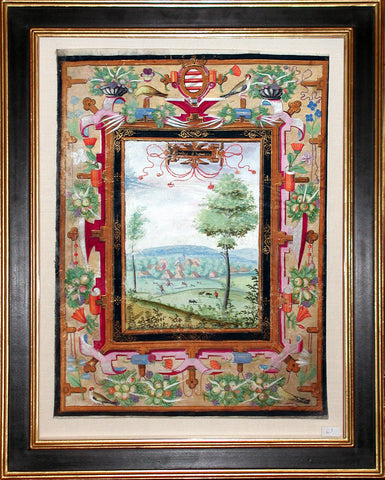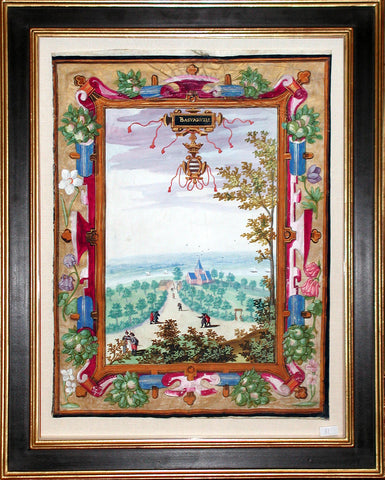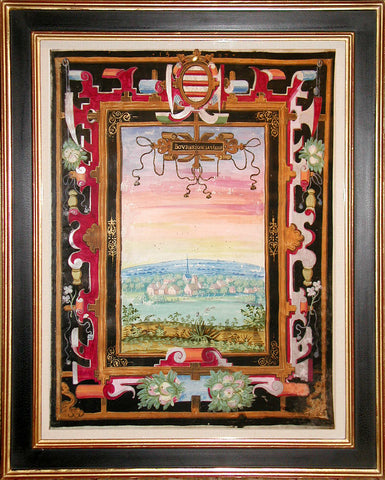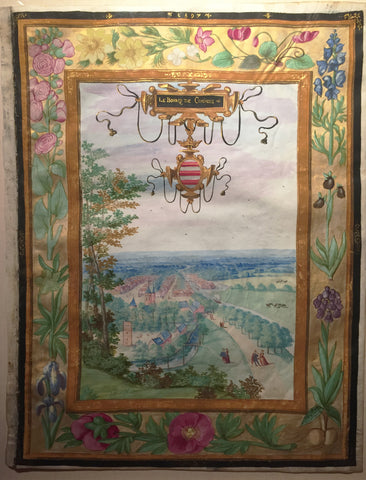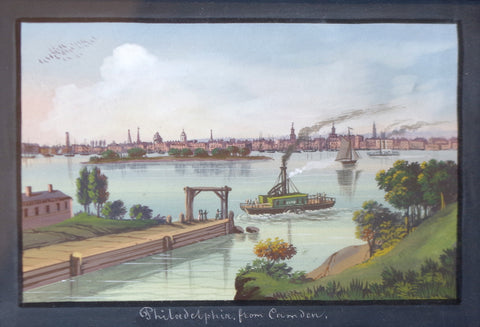
Nicolino Calyo (1799-1884), Philadelphia from Camden
Nicolino Calyo (1799-1884)
Philadelphia from Camden
Gouache on paper
Paper size: 6 3/8 x 8 7/8 inches
Inscribed at bottom center: ‘Philadelphia, from Camden’
Ca. 1838
This charming watercolor view of Philadelphia taken from Camden is one of a series of cabinet-sized gouaches from Calyo’s hand that explore, with gem-like clarity, the same artistic and iconographic concerns that characterize his larger views. In the present watercolor Calyo assumes his preferred observation point, the far shore of a body of water offering the prospect of a cityscape that avowed the subject of the composition. The foreground provides an opportunity for the artist to create a narrative scene. Here’s the viewer is poised on the New Jersey side of the Delaware River, at the Camden terminus of the Camden-Philadelphia ferry. The steam ferry is about to dock, with a worker making preparations on the shore, and trio of greeters waving to passengers on the boat deck. It is a clear, calm day with the shadows indicating perhaps late afternoon.
Smith’s island, an alluvial bar covered with willow trees, is visible mid-river with a cleared swath across the width of the island, dating this piece to around 1838. In this year, a large section of trees were cut on the island in preparation for a channel for the Philadelphia-Camden ferry that would divide the land in two, eventually becoming Smith’s Island to the north and Windmill Island on the south. A miniature panorama of the Philadelphia skyline stretches peacefully along the Pennsylvania shoreline. The waterfront is lined with a bevy of small boats, docked in pursuit of commercial transactions. Three of the numerous towers and steeples are readily identifiable: at the far right the white spire of the Christ Church pierces the horizon, third from right toward the center of the picture is Independence Hall, and on the far left is Sparks Shot tower.
Calyo’s career reflects a restless spirit of enterprise and adventure. Descended from the line of the Viscontes di Calyo of Calabria, the artist was the son of a Neapolitan army officer. He received his formal training in art at the Naples Academy, and his career took shape amidst the political turbulence of early-19th century Italy, Spain, and France. He fled Naples after choosing the loosing side of struggles of 1820-21, and by 1829 was part of an Italian exile community in Malta. This was the keynote of a peripatetic life that saw the artist travel through Europe, to America, within America, perhaps to Europe again, and back to America.
Calyo’s forte was close observation of people and places, meticulously rendered in the precise topographical tradition of his fellow countrymen, Canaletto and Francesco Guardi. In search of artistic opportunity, Calyo left Malta and, by 1834, was on the opposite side of the Atlantic Ocean in Baltimore, Maryland. He rapidly drew attention for his artistically rendered visual images of familiar locales, executed with a degree of polish and skill that was second nature for artists trained in the European academic tradition. Calyo arrived and settled in New York in 1835, inspired by the sights of the flourishing metropolis.
We Also Recommend

